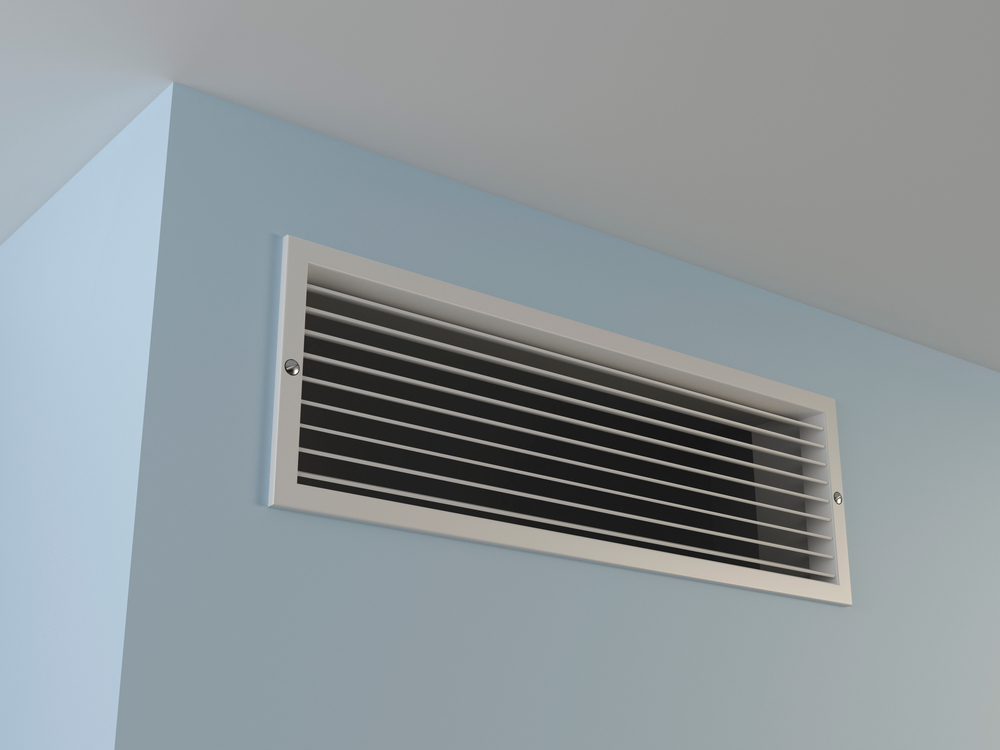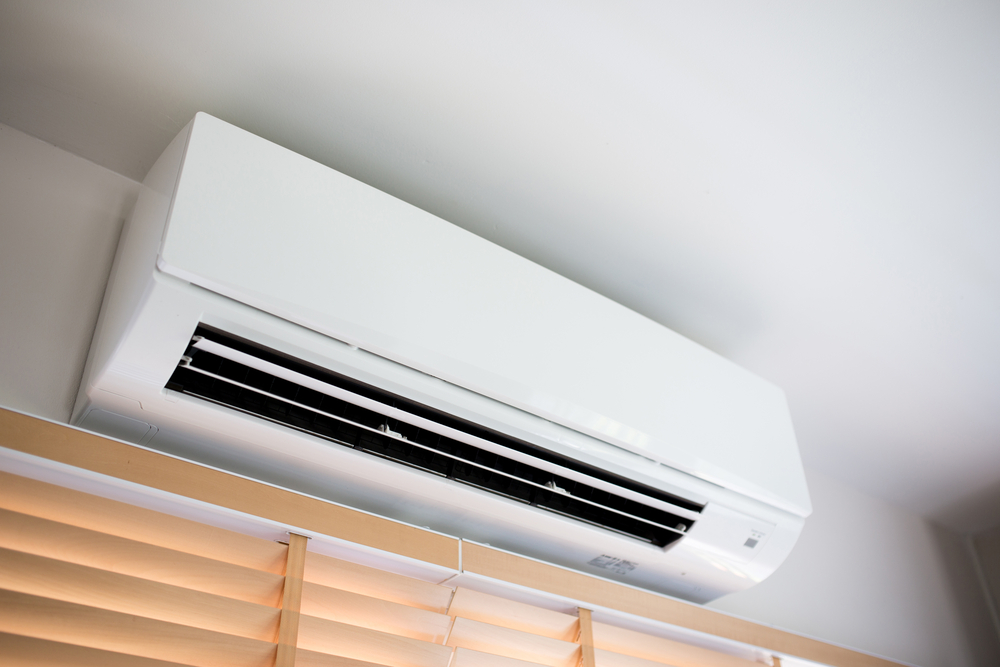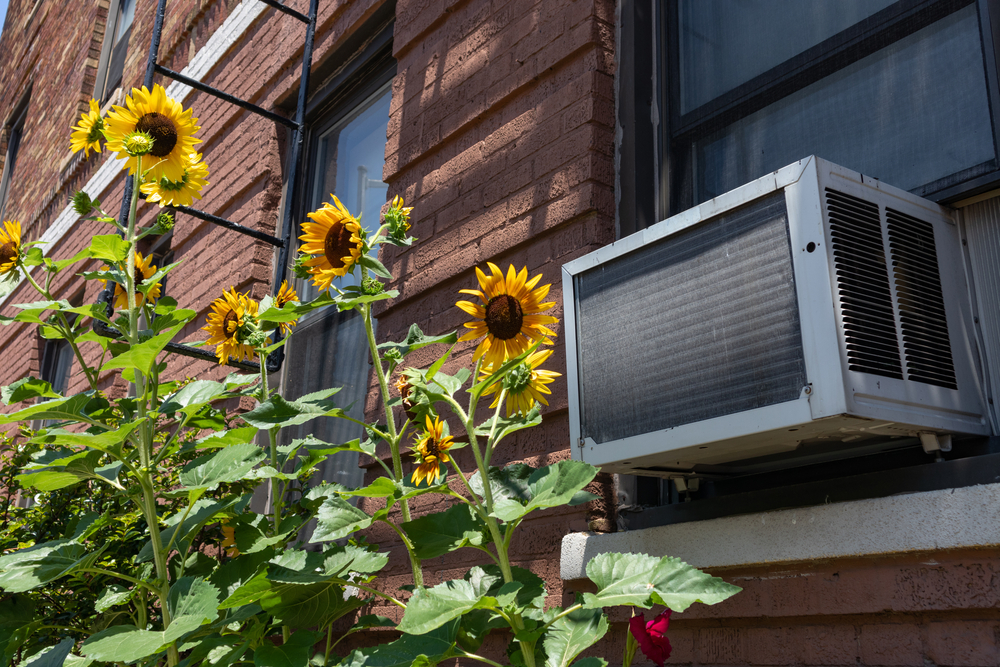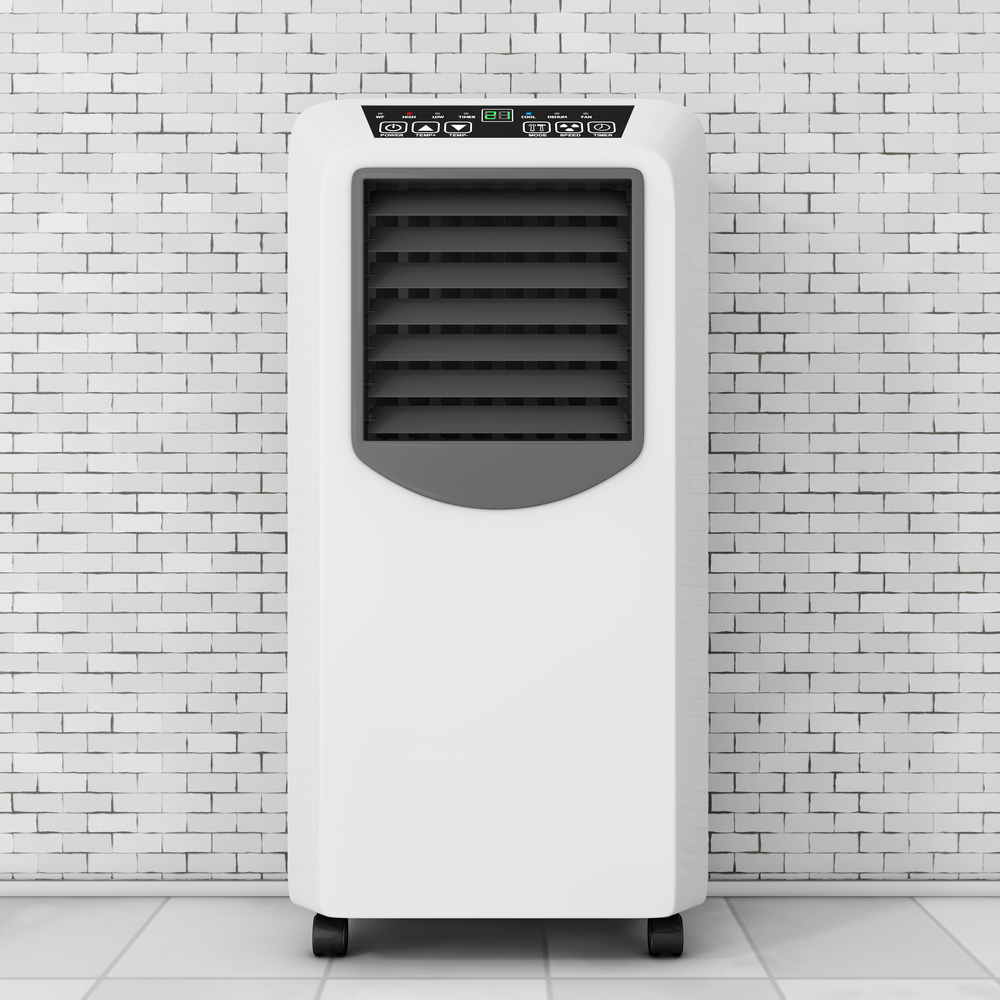Advice and News, Hints & Tips •
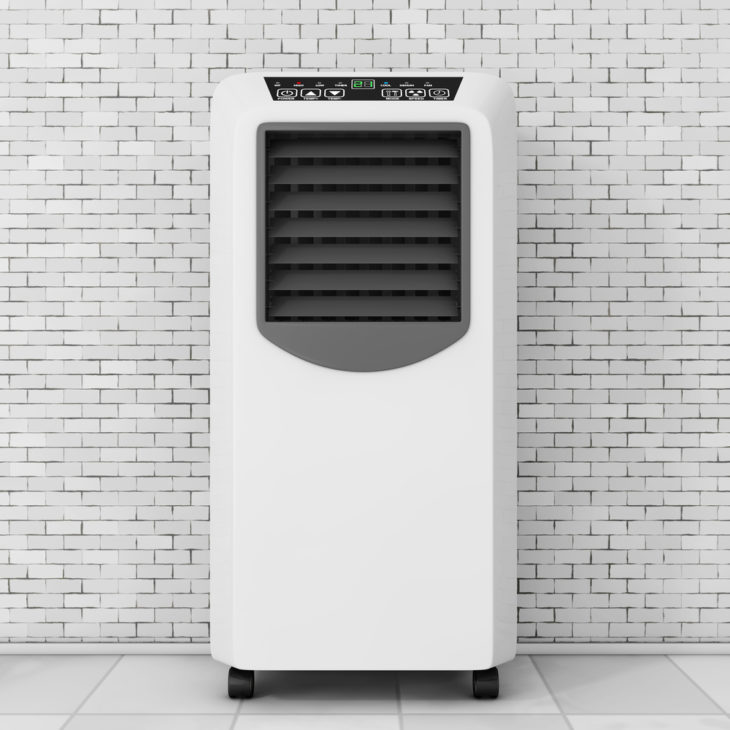
When we think about air conditioners, the main issues that spring to mind are efficiency and comfort levels. However, there is one other factor that can drastically affect the comfort of an air-conditioned environment —noise. Air conditioners work hard to function, so it’s difficult for any machine to do this in complete silence. However, if you are looking for a quiet air conditioner, there are a range of things to consider. These include the type of system, the brand and where it’s placed.
How are noise levels measured?
You can’t “try before you buy” when it comes to air conditioners, but you can research their noise levels by checking a specific brand’s specification sheets or checking with the retailer before you buy. Noise levels are measured in decibels (dB), and there will typically be two numbers — one that refers to the noise of a unit inside the home, and the other referring to exterior noise.
In this article, we will be listing the decibels of indoor units only, however, have included links to some of the brands’ specification sheets, so that you can check the outdoor unit noise levels as well.
What levels are considered acceptable?
When it comes to interior noise in an air conditioner, there are several factors involved, including the unit’s capacity. However, in a split system, for example, it is reasonable for them to be no louder than 35dB, however, some ducted systems can measure as low as 23dB, and some window units as high as 56dB. Ultimately, a noisy indoor unit can interfere with your sleep, conversation or activities.
As a comparison, here are some common sound levels:
- 20dB is equivalent to a whisper
- 30dB is equivalent to the sound level of a quiet home
- 40dB is equivalent to the ambient noise you’d hear in a residential area or park
- 50dB is equivalent to the interior of a quiet car while driving
- 60dB is equivalent to a typical conversation
- 70 to 80dB is equivalent to the noise of a vacuum cleaner
When it comes to exterior noise, obviously, the quieter your unit is, the better, but most local councils have noise restrictions relating to air conditioners. Typically, they should be no louder than 5dB above the usual ambient noise in your area.
However, guidelines can differ by state and are applicable particularly if you are installing an outdoor unit close to a bedroom or living room window or a neighbour’s house. If you’re in a strata-managed unit or apartment, it’s likely you will need approval from the Owner’s Corporation, so check the by-laws for details. You can find out more about the Queensland noise regulations here.
What type of air conditioners are the quietest?
Ducted air conditioners are generally the quietest, followed by split systems. Portable air conditioners and window units are generally the loudest. Wall or window air conditioners are noisy due to their installation placement, whereas ducted systems typically have the noisy components in the roof cavity.
There are also other factors involved, including:
Newer units vs. older units
When it comes to both indoor and outdoor noise, it will largely depend on the age, make and model of your unit. Older units will generally be noisier than newer models but is also heavily dependent on how the unit has been manufactured.
Many of the bigger brands included in this article have invested significantly in research and development to ensure that cutting edge technology is incorporated into the design to minimise noise. These include specifically designed air grilles on outdoor units, aerodynamic fan blades on both the indoor split system and its outdoor unit, and the latest innovations in compressor technology to ensure it operates efficiently and quietly. Some models also include a “Quiet Operations” function, that makes them ideal for areas like studies and nurseries.
System placement
When installing an air conditioning system, it pays to think carefully about where it will go — especially on the outside of your home. While you generally won’t need your local council’s approval, as mentioned above, there may be guidelines around the amount of noise that’s acceptable in your local residential area.
Specialist air conditioning installers can undertake an in-home assessment, make a recommendation based on your specific environment and requirements, and offer solutions on how to keep noise levels down.
Fan speeds
Air conditioner fans circulate heated or cooled air around the room, and models with a wide airflow range allow the air to be directed easily to the whole room. Multiple fans speeds can also help with air conditioner noise. For example, models with different fan speeds from very high (to help the room heat or cool quickly) to very low (so there is reduced noise once the required temperature has been reached).
Maintenance issues
Regular servicing is an essential part of keeping your unit functionally optimally, as unusual sounds can be due to a range of factors, including:
- Rattling – this may mean your fan rotor is loose.
- Humming – if this gets louder than usual, there may be a build-up of debris and dust inside the unit. If it’s really loud, humming could indicate that your starting capacitor is failing, which is a more serious problem.
- Squeaking – this often means your unit needs cleaning or lubrication.
- Grinding – this is something to be a bit more concerned about, as it could mean that something is about to go seriously wrong – like a dual shaft motor breaking down or an essential bearing failing.
- Hissing – this is probably the most worrying noise of all, as it can either signify a minor issue, like an air return leak, or a very major one, such as a unit leaking refrigerant
Quiet ducted air conditioners
Ducted AC
Ducted air conditioners work by funnelling cool air from a central unit that is usually installed in your home’s roof through a series of ducts to every room in your home. The air circulation is usually zoned, so it allows you to control temperature, airflow and turn off zones as needed.
When it comes to interior noise, ducted air conditioners are typically the quietest. And as we’ve mentioned above, it is reasonable to expect that they are no louder than 35dB (depending on the capacity), however, when you compare them to some window units that have a dB rating of 56dB, slightly more than that is acceptable! Three of the most popular ducted air conditioner brands and their lowest indoor dB rating is:
Mitsubishi Electric
- SEZ series (compact ceiling concealed) – SEZ-KD25VAQ(L) – 23dB (now that’s a quiet air conditioner!) This system is designed for homes and offices, and at only 200mm high, its design guarantees easy installation. It provides optimum air conditioning efficiency and comfort.
- PEAD series (ceiling concealed) – PEAD-RP71JAAD – 30dB. This system has a wide range of static pressures that allows airflow to be directed to different areas of your home. It’s also a great solution for buildings with low ceiling space.
- PEA series – PEA-RP100GAA – 39dB. This system has an increased variation in airflow to ensure operation suits most room layouts. The fan speed is also effectively controlled to increase the efficiency of dehumidification.
Daikin
The Daikin Premium Inverter series takes energy efficiency to the next level. It is engineered with improved refrigerant control technology and a DC fan motor on the indoor unit. Some options include:
- Premium inverter – single phase – FDYQ71LBV1 – 41dB
- Premium inverter – three-phase – FDYQ100LBV1 and FDYQ200LCV1 – 44dB
This is a new and improved series that has been designed to meet the construction challenges of modern commercial and medium density apartment development. Some options include:
- FBA – single phase – FBA50BAVMA and FBA60BAVMA – 35dB
- FBA – three phase – FBA71BVMA, FBA85BVMA and FBA100BVMA – 38dB
Fujitsu General
- Bulkhead – ARTGO9LLLB – 28dB. This model is designed to allow for flexible installation in the best available space.
- Slimline indoor – ARTG24LMLC – 31dB. This model is slim and compact in order to fit into most ceiling spaces, making it ideal for discreet installation.
- High static single-phase – ARTG30LHTA – 41dB. This model allows for an increased number of air ducts to be installed.
- High static three-phase – ARTG36LHTB – 41dB. This model includes Smart technology that works at an optimum setting to create a more comfortable environment for your home.
Quiet split system air conditioners
Split system AC
Split systems generally have two parts — an outdoor stand-alone compressor/condenser unit and an indoor wall-mounted unit with an evaporator. Split systems are also reasonably quiet when it comes to interior noise.
Six of the most popular ducted air conditioner brands and their lowest indoor dB rating is:
Daikin
Daikin split systems are ideal for air conditioning in one room or a specific area of a home. A wide variety of models are offered to suit your requirements and are available in either wall-mounted or floor-standing types.
- 2.5kW – FTXF25TVMA – 20dB
- 3.5kW – FTXF35TVM – 20dB
- 5kW – FTXF50TVM – 28dB
- 7kW – FTXF71TVM – 30dB
Mitsubishi Electric
This brand’s split systems range from wall-mounted and console versions to multi-head systems that offer you the flexibility to choose the perfect indoor unit for each room in your house.
- 2.5kW – MSZ-AP25VG – 19mB
- 3.5kW – MSZ-AP35VG – 19mB
- 5kW – MSZ-AP50VG – 28mB
- 7kW – MSZ-AP70VG – 30mB
Fujitsu
Fujitsu systems range from wall-mounted versions to floor/ceiling consoles that can be mounted on the floor or under the ceiling.
- 2.5kW – ASTG09KMTC – 40mB
- 3.5kW – ASTG12KMTC – 22mB
- 5kW – ASTG18KMTC – 29mB
- 7kW – ASTG24KMTC – 29mB
Hitachi
Hitachi’s wall-mounted or console systems have intuitive climate control settings to keep your home comfortable and energy-efficient.
- 2.5kW – RAS25YHA1 – 46mB
- 3.5kW -RAS35YHA1 – 25mB
- 5kW – RAS50YHA1 – 26mB
- 7kW – RAS70YHA1 – 30mB
Samsung
Innovative technology in their split systems warms up fast in winter and cools down spaces quickly in winter. Their advanced filter system helps make any environment more comfortable.
- 2.5kW – AR09KSFTAWQNSA – 21mB
- 3.5kW – AR12KSFTAWQNSA – 21mB
- 5kW – AR18KSFTAWQNSA – 25mB
- 7kW – AR24KSFTAWQNSA – 27mB
Panasonic
Panasonic has an extensive range of split systems that lead the way in performance, comfort, energy efficiency and reliability.
- 2.5kW – CS-Z25VKR – 19mB
- 3.5kW – CS-Z35VKR – 19mB
- 5kW – CS-Z50VKR – 29mB
- 7kW – CS-Z71VKR – 34mB
Quiet window air conditioning units
Window AC
Window air conditioning units have the condenser, coils, compressor and the evaporator all in one single unit. They are designed to fit into the window of a room, so generally don’t need any significant home modifications for installation. They are convenient and often cheaper than ducted or split systems, however they are usually less effective, less efficient and noisier. This is mainly because the noisiest component, the compressor, is located inside the home rather than outside (with split systems) or in the roof cavity (with ducted systems).
An air conditioner’s noise can vary depending on the room it is in. For example, soft furnishings and carpets will absorb some noise, whereas tiles and hard floors can amplify it. However, even with a quieter unit, you will still hear it running, and portable units often don’t rate well for their actual cooling performance.
On the plus side, they are a good option if you don’t have the budget for a split or ducted system and/or you rent or live in a strata complex that won’t approve other types of air conditioning systems.
In terms of the best quiet air conditioner window unit, here are two worth considering:
Kelvinator
- 1.6kW – KWH16CMF – 45mB. This system cools only, however it has a modern design, auto-swing and internal corrosion-resistant heat exchangers and auto restart.
- 6.0kW window -51mB. This system has a remote control, timer, auto-swing, sleep mode and internal corrosion-resistant heat exchangers and auto restart.
Dimplex
- 4.1kW – DCB14 – 56mB. This is a reverse cycle system designed to warm or cool rooms up to 27 square metres. It has a programmable timer and is easy to install.
Quiet portable air conditioners
Portable AC
Although they are called “portable”, these types of air conditioners are often heavy (sometimes up to 40 kilograms!) and not easy to manoeuvre. They are typically installed using a supplied kit and are a good option if you want an immediate solution and don’t want to wait for professional installation, and/or you rent or live in a strata complex that won’t approve other types of air conditioning systems. However, like window air conditioners, they are less efficient, less effective and noisier.
If any of these situations apply to you, here are some quiet portable air conditioner options (well, perhaps not “quiet”, but some of the quietest of their type out there!)
Polocool Whisper
- 2.6kW – PQ10C – 50dB. This unit makes it easy to keep your bedroom or other interior space cool and comfortable, and it features a LED-backlit display that can be remotely turned off to minimise distractions when going to sleep.
DeLonghi Silent
- 2.4kW – PAC CN86 – 54.25dB. This unit’s cooling capacity allows you to maintain the perfect indoor temperature on warm days.
The Polocool
- 6kW – PC-58AP/C – 56dB. This unit has plentiful cooling capacity, a convenient built-in timer and multiple speed options
References
- 2018, The noise factor: why it’s important both indoors and out, Daikin
- Chris Barnes, 2021, How to buy the best air conditioner, Choice
- 2021, Best Ducted Air Conditioning Review, ABC Air
- 2021, Ducted Systems, Daikin
- 2021, Ducted Range, Fujitsu
- Pru Engel and Jason Treuen, 2020, Quietest portable air conditioners, Choice
- Kim Gilmour, 2021, How to buy the best portable air conditioner, Choice
- 2021, Window/Wall air conditioner, Kelvinator
- 2021, Reverse Cycle Window/Wall Box Air Conditioner, Dimplex

